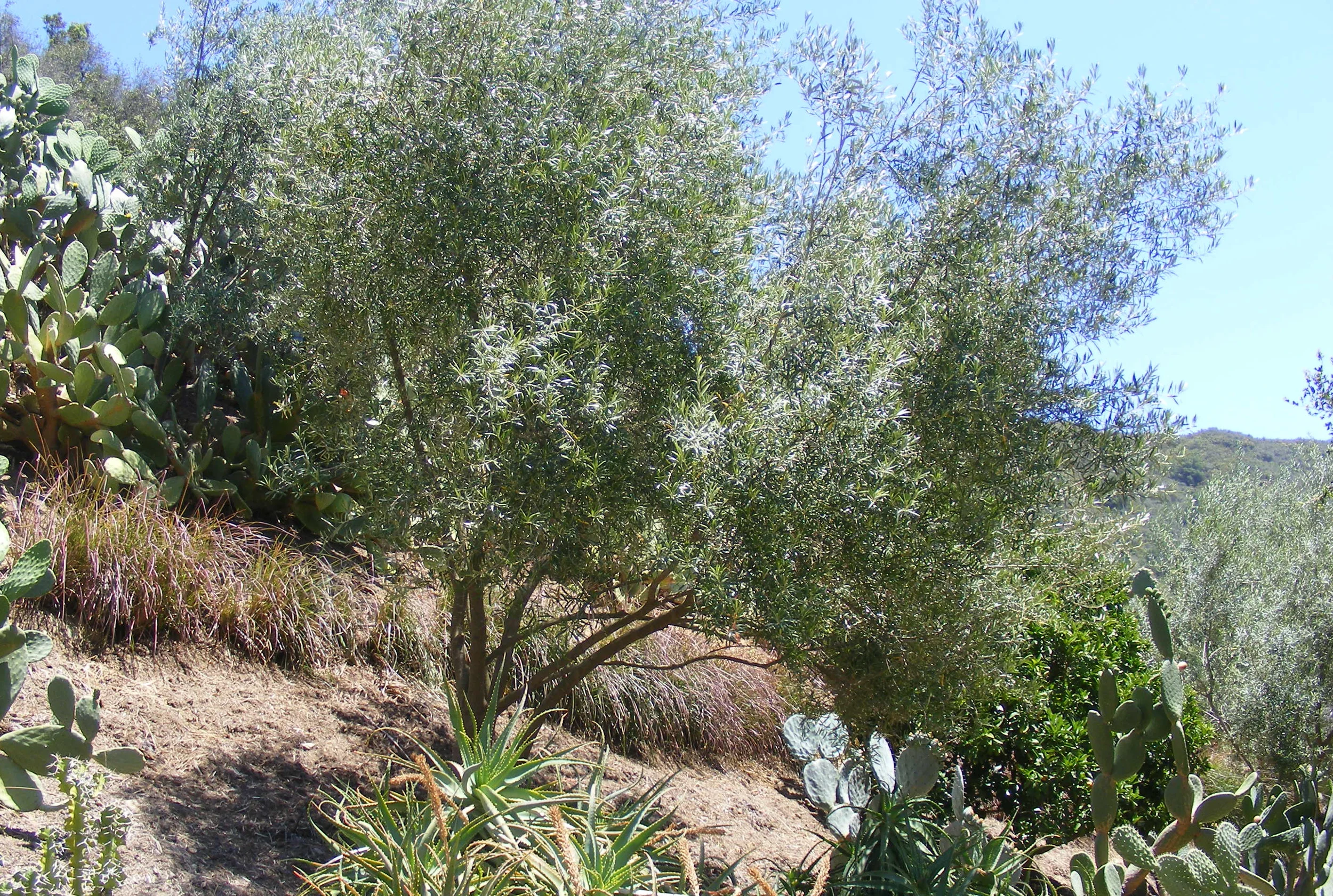Low Water Use Plants to Integrate with Prickly Pears and Agaves to Create a Diverse, Balanced Farming Operation
There are other drought tolerant crops that work well with this Agave – Opuntia paradigm. Incorporating other low water use crops into the farm plan provides more diversity, more interest for owners, spreads risk, and provides more balanced income and stability while taking advantage of other niche markets, favorable micro climates and more profit centers.
Olives
One major Dryland crop we have worked with is the Olive tree, which is quite compatible with Agaves and Prickly pears with respect to soil adaptability, climate, and water use. Beyond the practical areas of compatibility, Olives, Agaves and Prickly Pears look beautiful together, and we believe a farm should be beautiful and aesthetically pleasing in the landscape. The Olive trees we promote are varieties noted for their oil production. Our primary source for Olive Trees is Santa Cruz Olive Tree Nursery and we have had terrific results establishing Olive orchards with their trees over the years.
Frangivento Olive tree windbreak and screening/privacy planting with Opuntia firebreak planting on the property line in the Santa Barbara, CA foothills where wind and fire are definite concerns. The Frangievento Olive tree has a tendency to grow upwards forming a column with branches and shoots that grow straight up. This characteristic, combined with a marked resistance to salty winds, has made this variety one used primarily for windbreaks.
White Sapote
White Sapote (Casimiroa edulis) is a subtropical fruit tree that produces large crops of sweet tasty fruit over a long season. We love this fruit eaten fresh out of hand but it is also great for value added products such as ice cream, popsicles, or distilled spirits. Native to Central Mexico the White Sapote thrives on Santa Barbara’s native rainfall in normal rainfall years once established. Medium to very large, 15 to 50 feet according to cultivar and soil this crop has has few pest or diseases and makes a terrific windbreak for less wind resistant crops.
Winegrapes
A small but growing number of winemakers and viticulturists are turning to dry farming some or all of their grapes. Along with concerns about our dwindling water supply, rising water costs and other conservation issues, they are doing it because they believe they can make better wine. Growers and winemakers who don't think they can dry farm on their sites, for whatever reasons, can reduce water use through deficit irrigation and other techniques.
The major deciding factors in growing wine grapes with little or no irrigation are the soil, its depth and the texture, its moisture holding capacity, and the climate. If the soil and the climate aren’t conducive irrigation is necessary or the crop will be disappointing. Drylands Farming Company can discern whether or not your site supports a Dryland approach to growing wine grapes and if it does, we can design your vineyard, source your plants to establish the vineyard and get it planted.

